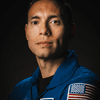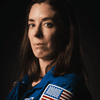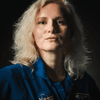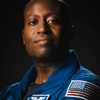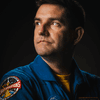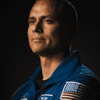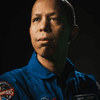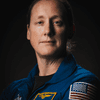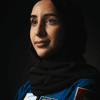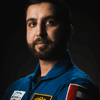Johnson Celebrates New Astronaut Class as Spaceflight Opportunities Soar
On March 5, 2024, in Johnson Space Center’s Teague Auditorium, NASA celebrated the graduation of its 23rd astronaut class. The astronauts were welcomed into the ranks as they earned their wings and became eligible for spaceflight.
After completing over two years of rigorous training, the candidates are now official members of NASA’s Astronaut Corps, showcasing their readiness to venture into the great unknown. They will have ample opportunities to embark on multiple missions aboard a myriad of spacecraft.
Their new wings will propel them to journeys aboard the International Space Station and future commercial destinations in low Earth orbit, laying the groundwork to pioneer toward the Moon and future voyages to Mars.
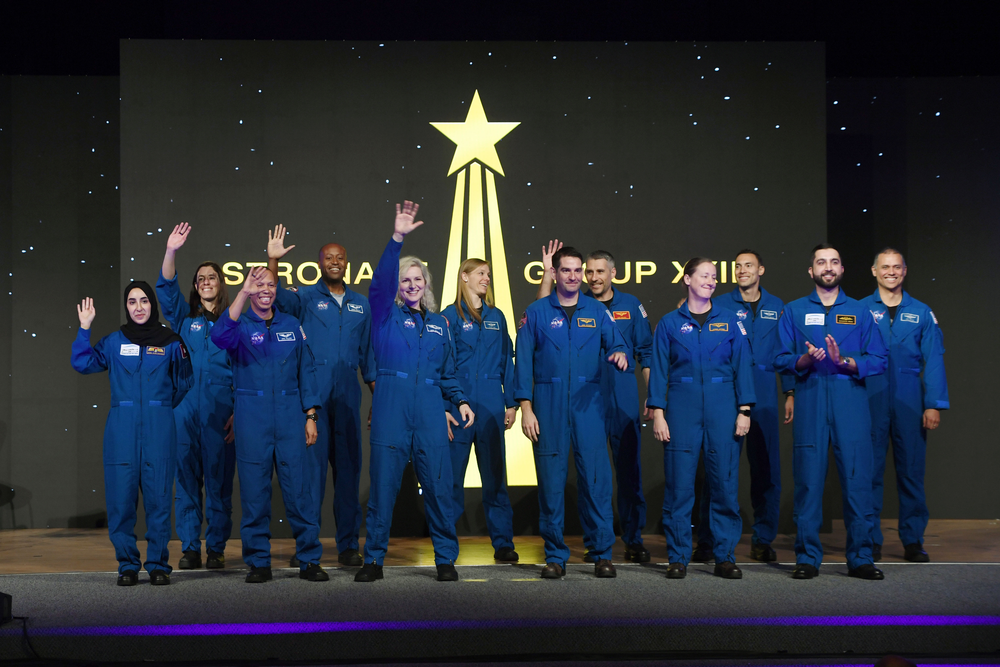
The 2021 class of astronauts is Nichole Ayers, Marcos Berríos, Christina Birch, Deniz Burnham, Luke Delaney, Andre Douglas, Jack Hathaway, Anil Menon, Christopher Williams, and Jessica Wittner along with two United Arab Emirates candidates from the Mohammed Bin Rashid Space Center Nora AlMatrooshi and Mohammed AlMulla. The class is comprised of individuals with skill sets and backgrounds in medicine, physics, aviation, and engineering.
The ceremony began with opening remarks from chief of the Flight Operations Directorate Norm Knight, deputy chief of NASA’s Astronaut Office Shannon Walker, and Johnson Director Vanessa Wyche.
“This is a very exciting day for our nation and for all of humanity,” said Knight.
Walker praised the candidates’ wide-ranging expertise and unique contributions, stating, "The breadth and depth of experience that this class brings to our space program is nothing short of amazing."
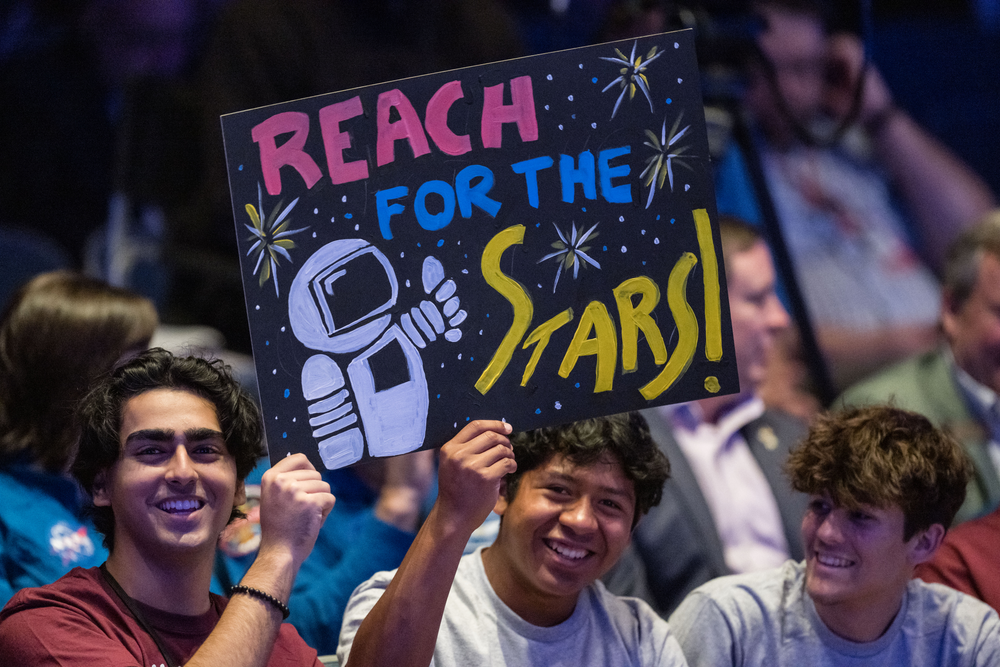
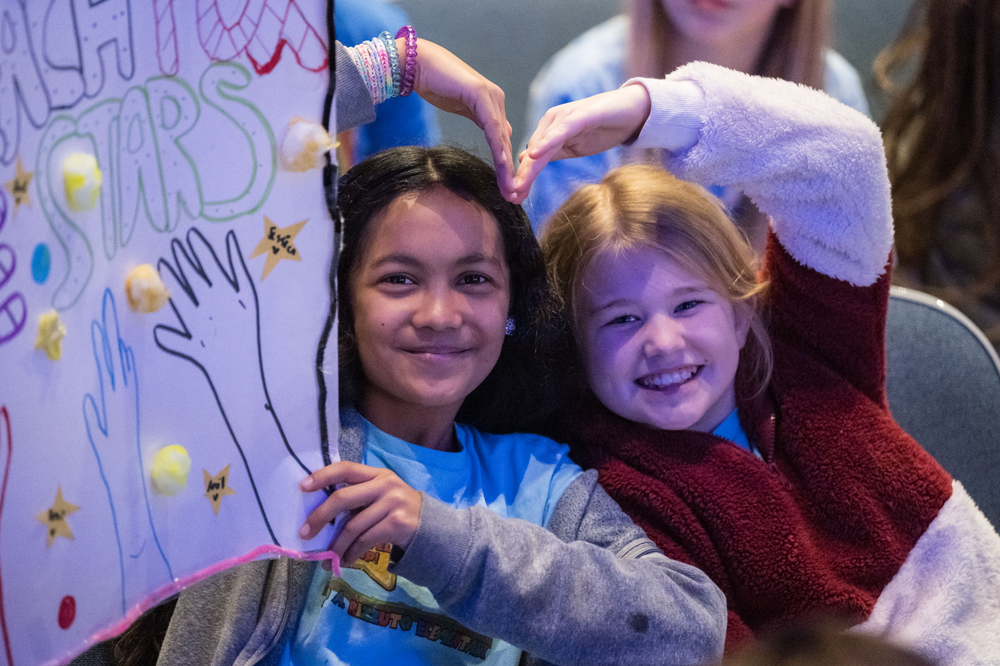
Students hold signs to congratulate the newest astronauts who earned their wings on March 5, 2024. Credit: NASA/Josh Valcarcel
Students from the La Porte and Clear Creek Independent School District and Texas High School Aerospace Scholars also attended the ceremony. Wyche shared an inspiring message with the students, “These astronauts were once just like you—full of curiosity and dreams. You are the future explorers, scientists, engineers, inventors, and mathematicians of the Artemis generation,” she said.
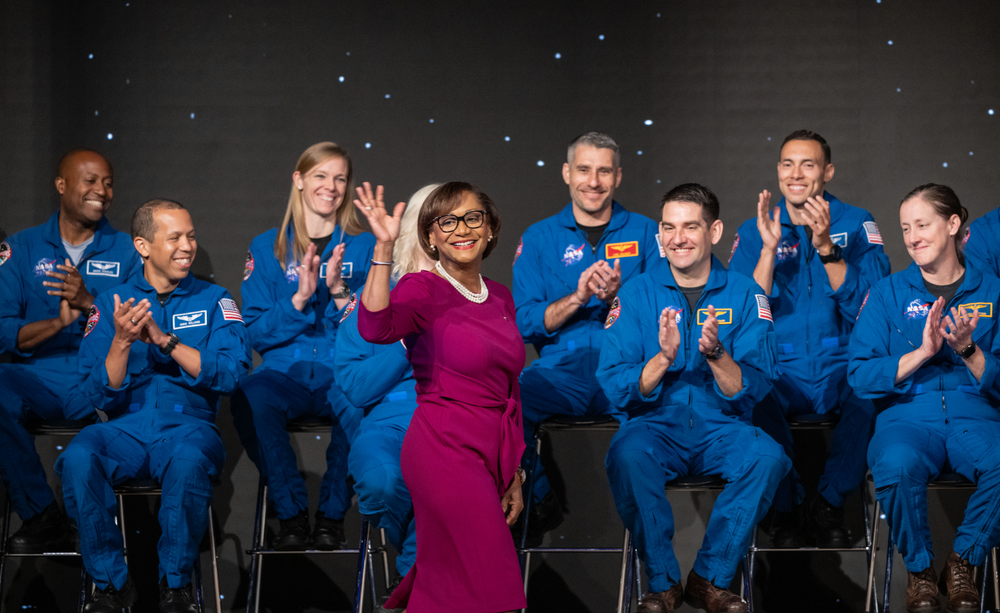
Special guests included NASA Associate Administrator Jim Free, NASA Deputy Associate Administrator Casey Swails, U.S. Reps. Brian Babin, Dan Crenshaw, Sheila Jackson Lee, and Sylvia Garcia, Harris County Precinct 2 Commissioner Adrian Garcia, Councilman Fred Flickinger, and representatives from the Mohammed Bin Rashid Space Centre and Japan Aerospace Exploration Agency.
The ceremony recognized the new astronauts, affectionately known as the Flies, and underscored the importance of teamwork, dedication, and the pursuit of dreams within the space community.
NASA astronauts Frank Rubio and Jessica Watkins, and Artemis II Commander Reid Wiseman, took the stage to encourage their friends and colleagues on their new journey.
“You will set records, but the best part is you’ll watch your friends break them,” said Wiseman. “You will shape the future of this office and you will contribute to our space program simply by being yourselves.” Wiseman introduced a special guest to the podium with praise. “We stand on the shoulders of giants and there are none larger than Apollo 17 astronaut, geologist Dr. Harrison Schmitt,” he said.
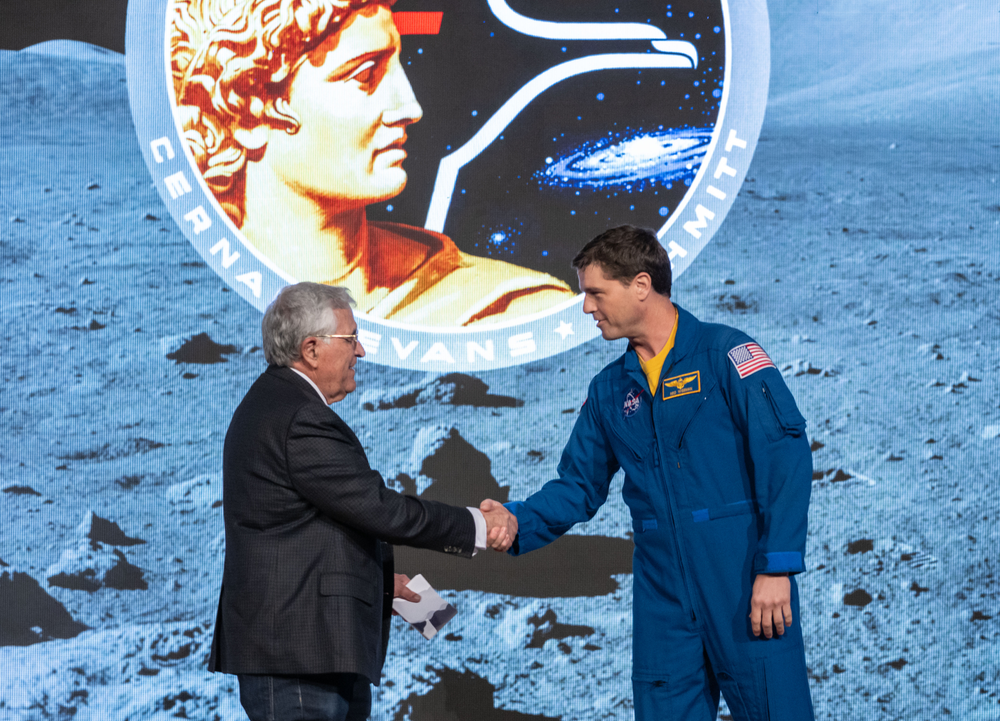
Credit: NASA/James Blair
Dr. Schmitt joined Apollo 17 as the lunar module pilot and became the first scientist and the 12th person to step on the Moon in December 1972. He opened the speech by throwing moonballs at the cheering audience, a tradition he shares at every public event where he presents.
Dr. Schmitt expressed his gratitude to the new graduates for their friendship and dedication to the agency’s mission. “Hard work, dedication, and freedom have brought you this far. Let’s stick with it,” he said.
Free shared his own words of encouragement. “You represent humanity's shared goal to explore. You embody the ideas we hold of who we can be when we are at our best,” he said. “We are lifting you up every day. Our commitment to you and your loved ones is to ensure you fly safely.”
Chief of the Astronaut Office Joe Acaba took the honor of pinning the new astronauts. Then Christina Birch took the stage as the class lead of the Flies.
“Spaceflight is the ultimate team sport,” said Birch. “The team is not just the 12 of us here on the stage - it really is the entire NASA community.” Birch extended a big thank you to all of the NASA teams that made the ceremony possible.
The unified message was clear: “In the words of one of my colleagues, you have records to break, space to explore, humans to inspire, vehicles to fly, and dreams to achieve. I am so proud of each and every one of you and I cannot wait to see the dreams that you will continue to accomplish as astronauts,” said Walker.
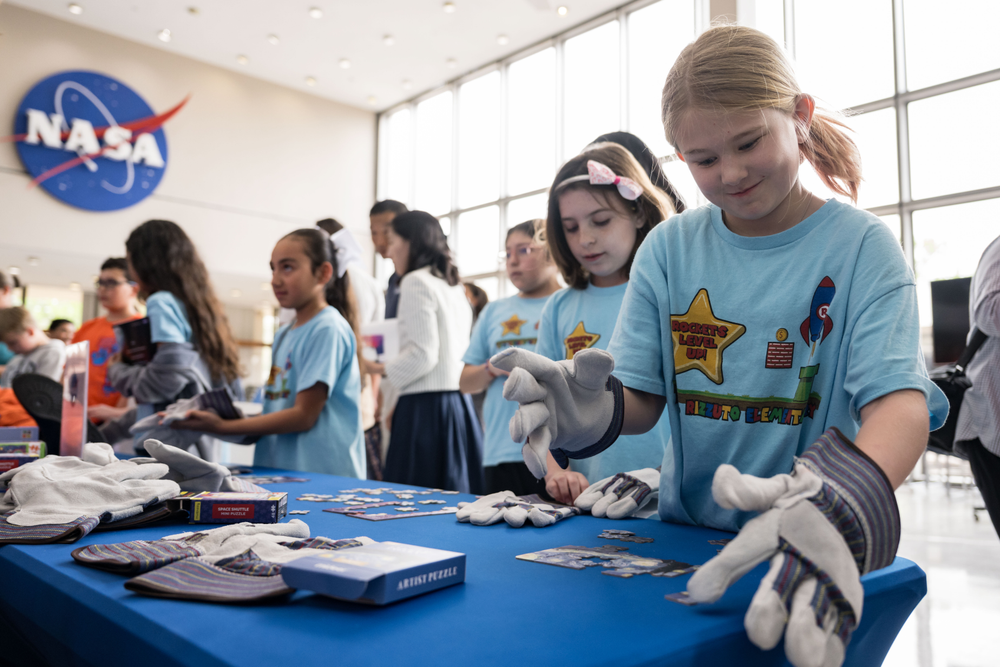
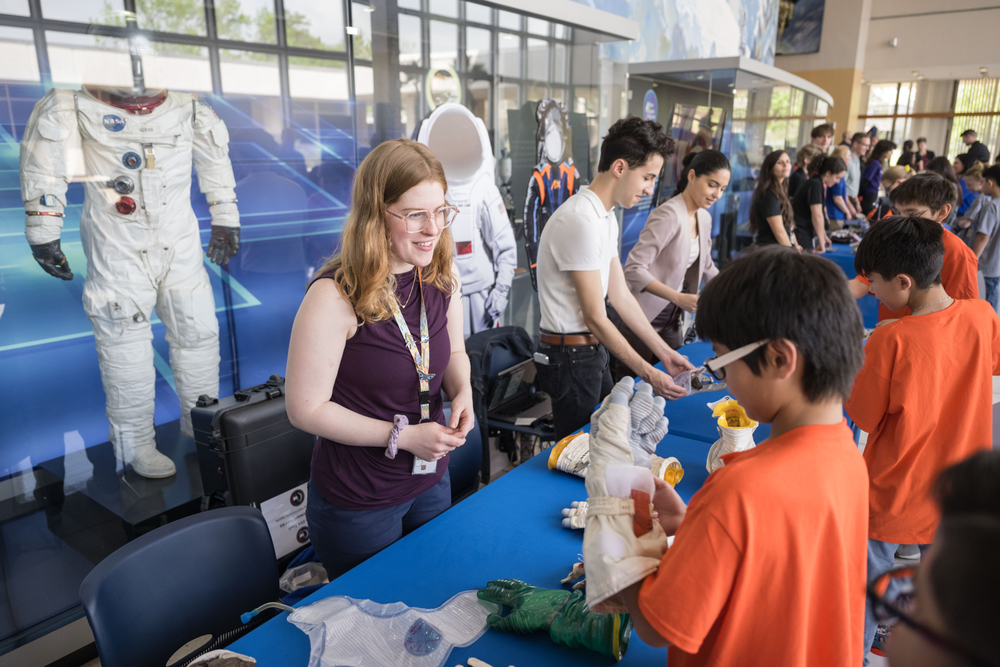
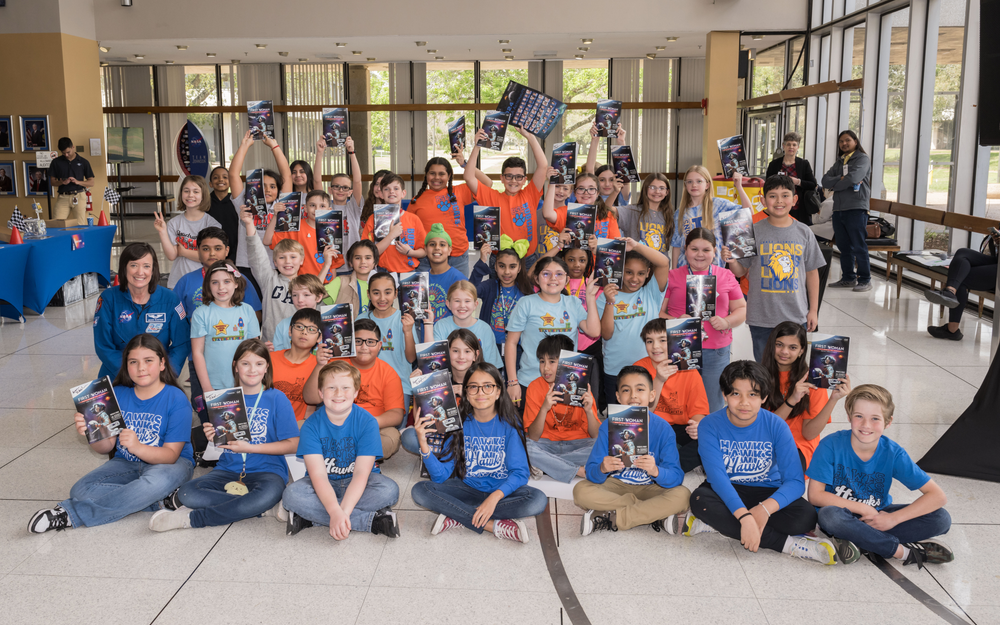
Credit: NASA/Josh Valcarcel
After the ceremony, guests gathered in the Teague lobby to catch a glimpse of the various missions and programs at Johnson. NASA’s Office of STEM Engagement organized interactive activities for students, such as a crew assembly setup and an electrostatic moon duster project in which students delved into the engineering design process, simulating the role of engineers on NASA’s dust mitigation engineering team.
NASA’s Astromaterials Research and Exploration Division displayed a collection of Moon rocks and meteorites. Exhibits featured astronaut gear including spacesuits, gloves, boots, and tools alongside details on the Artemis lunar rover, the Volatiles Investigating Polar Exploration Rover, or VIPER, that will explore the Moon for ice and other resources this fall. Space Center Houston also hosted a booth where attendees could write their aspirations for the future of space exploration on a postcard.
In this momentous event, NASA reaffirmed its commitment to advancing human spaceflight, inspiring new generations of explorers, and fostering collaboration across the global community to explore the unknown and achieve extraordinary milestones in human spaceflight.
***

The application to join the next astronaut class is open until Tuesday, April 16, 2024.
Prefer to keep your feet on the ground? Help us spread the word instead – please share with friends, family, and professional networks.
Launch your career in exploration today!
Scroll below to learn about NASA’s 23rd astronaut class. Credit: NASA/Josh Valcarcel









